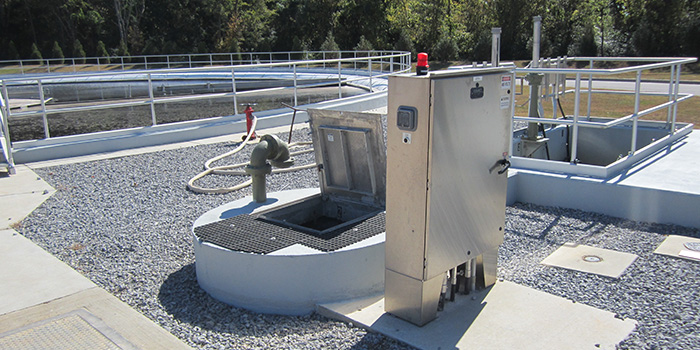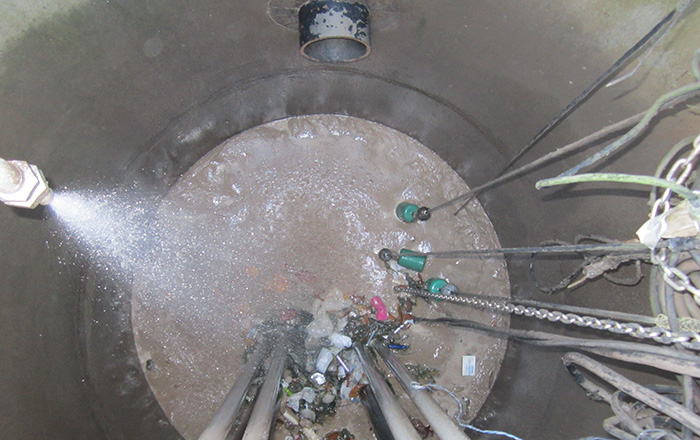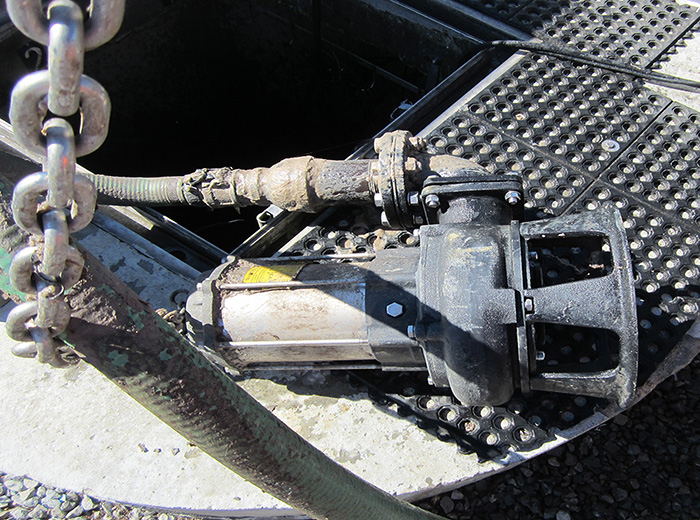Submersible shredder pump offers a solution to problems caused by ‘flushable’ wipes and other fibrous material in Alabama facility.
BJM Pumps, Morrow Water Technologies Inc, Municipal Consultants Inc
03/03/2017
Clogs, especially those caused by wipes, can be a major headache for wastewater treatment plants. One city in Minnesota has even filed a lawsuit against makers of “flushable” wipes. Excessive clogging issues at a wastewater treatment plant in Alabama sent the facility’s team on the hunt for a solution to this pressing maintenance issue.
.jpg) Image 1. At an Alabama wastewater treatment plant’s pump station, excessive clogging issues caused representatives to search for a permanent solution. (Courtesy of BJM Pumps)
Image 1. At an Alabama wastewater treatment plant’s pump station, excessive clogging issues caused representatives to search for a permanent solution. (Courtesy of BJM Pumps) Image 2. The wastewater treatment plant utilized the services of Municipal Consultants Inc., a Birmingham-based engineering group with many years of experience in solving challenges for wastewater pumping stations.
Image 2. The wastewater treatment plant utilized the services of Municipal Consultants Inc., a Birmingham-based engineering group with many years of experience in solving challenges for wastewater pumping stations.  Image 3. The small pump station inside the wastewater treatment plant contained two grinder pumps in a duplex arrangement. Having two pumps in a duplex arrangement is common for most wastewater pumping stations. The maintenance team installed a basket strainer to catch the solids entering the station. Unfortunately, even after the catch basket had been installed, both grinder pumps continued to clog and cause headaches for the maintenance team.
Image 3. The small pump station inside the wastewater treatment plant contained two grinder pumps in a duplex arrangement. Having two pumps in a duplex arrangement is common for most wastewater pumping stations. The maintenance team installed a basket strainer to catch the solids entering the station. Unfortunately, even after the catch basket had been installed, both grinder pumps continued to clog and cause headaches for the maintenance team.  Image 4. A submersible shredder pump was chosen for its unique hybrid design that features grinding and shredding action. This patent-pending design employs both radial and axial shredding components and has been proven to obliterate solids in wastewater.
Image 4. A submersible shredder pump was chosen for its unique hybrid design that features grinding and shredding action. This patent-pending design employs both radial and axial shredding components and has been proven to obliterate solids in wastewater.
